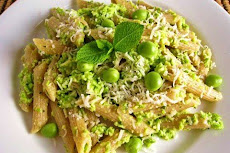
By Carl Bialik, The Wall Street Journal
October 8th, 2009
I wrote last summer about menu labeling of calorie counts, and questioned whether they would influence diners to make healthier choices. This week, a widely reported study of a New York City law mandating menu labeling in chain restaurants revealed that low-income diners didn’t order lower-calorie meals when confronted by the calorie counts, when compared with New York diners before the law was passed and with diners in Newark, which doesn’t have mandatory labeling. The study undercuts a major notion behind menu labeling: that, when confronted with mammoth calorie counts, diners will choose healthier options.
Pierre Chandon, a marketing professor at Insead, the international business school in France and Singapore, said that the study adds to prior results that are discouraging for menu-labeling advocates. “Although its results are disappointing to those (including me) who are in favor of calorie information in restaurants, they are not that surprising,” Chandon said. “We know that informing people about nutrition value and changing their food preferences are two very different things. In fact, some studies have even shown that calorie disclosure can backfire and increase unhealthy choices among people who, for example, think that unhealthy (high-calorie, high-fat) food is tastier.”
The study’s authors suggest that labeling might work if combined with other efforts to prod diners toward healthier choices. “My sense is that to really influence obesity, we will probably need a combination of interventions,” Brian Elbel, assistant professor of medicine and health policy at New York University and lead author of the study, told me. “These will have to deal with the availability of foods in a community (both health and unhealthy), the price of foods (health and unhealthy), the marketing of foods and what we provide in schools for kids.”
One measure that New York has taken since the study is an educational campaign, which might combine with calorie counts to influence choices. “I do think it would have been helpful to look at consumers who both saw the labels and were also aware of the education program, but the data were collected prior to the NYC education component,” said Scot Burton, professor of marketing at the University of Arkansas’s business school.
Kelly Brownell, director of the Rudd Center for Food Policy and Obesity at Yale University and an advocate of menu labeling, said he expected the educational program, and a proposed sugar-sweetened-beverage tax that he also supports, could boost the results. He also took it as a positive sign that 28% of New York low-income diners said the menu labels influenced their purchases. “That’s a big number,” Brownell said. (Menu-labeling advocate Marion Nestle wrote that the study doesn’t mean menu labeling won’t have positive effects.)
“At least the public has information and that’s the government’s job — to make sure that the public has information,” Mayor Michael Bloomberg told reporters, according to Reuters.
To J. Justin Wilson, a senior analyst at the Center for Consumer Freedom, the study validates his group’s opposition to menu labels. “There wasn’t any proof it would be effective,” he said — and he says the same applies to the so-called soda tax. (Brownell disagrees, citing evidence from tobacco taxes.)
Two mitigating factors make the study not quite as damning for menu labels as it seems on first glance. First, it’s possible that the effect is smaller among people with lower incomes, because healthier options — such as salads or chicken breasts — often are more expensive. And second, though New York diners’ chain-restaurant meals averaged more calories after the law took effect, Elbel points out that the difference wasn’t statistically significant.










